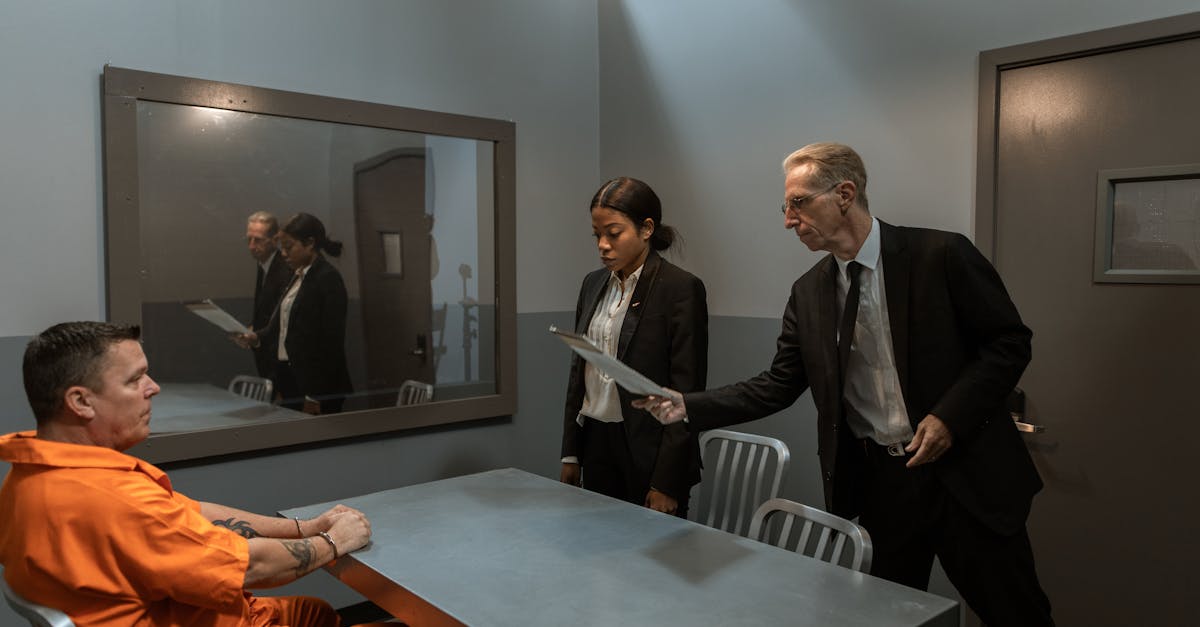Exploring the Popularity of True Crime Documentaries
Introduction
In recent years, true crime has exploded from niche interest to mainstream phenomenon, captivating millions worldwide. This genre's powerful grip on our collective imagination speaks to something fundamental in human nature—our fascination with life's darkest corners. But what exactly fuels this unprecedented cultural obsession? Is it simply morbid curiosity, or does our attraction to these real-life mysteries reveal deeper psychological and societal truths?
True crime documentaries have become more than just entertainment; they've evolved into a cultural force that shapes public discourse, influences legal outcomes, and even alters our perception of justice. From Netflix's "Making a Murderer" to HBO's "The Jinx," these productions blend investigative journalism with cinematic storytelling to create compelling narratives that linger long after the credits roll.
As we explore this complex genre, we'll examine its historical roots, psychological underpinnings, ethical dilemmas, and future trajectory—painting a comprehensive picture of why true crime has become one of the most significant media movements of our time.
Advertisement
The Evolution of True Crime Content
True crime as a genre has evolved significantly over the years. Initially, printed books and newspaper columns were the primary sources of true crime stories. Television then introduced dramatized crime series, but it was the documentary format that appealed to those seeking an authentic recounting of events. The popularity of shows such as 'Making a Murderer' highlighted viewers’ growing appetite for immersive, detailed storytelling. True crime's evolution is marked by a shift from sensationalism to substantiated evidence, accompanied by interviews and authentic footage. This transformation has helped demystify the genre, making it more credible and academically engaging.
From Penny Dreadfuls to Prestige Television
The true crime genre has undergone a remarkable transformation since its early incarnations:
19th Century Origins: Sensationalized crime pamphlets and "penny dreadfuls" fed public appetite for grisly tales
Mid-20th Century: Truman Capote's "In Cold Blood" (1966) pioneered the "nonfiction novel" approach
1980s-90s: Court TV and shows like "America's Most Wanted" brought real crimes into living rooms
2010s-Present: Streaming platforms elevated production values and narrative complexity
The Documentary Revolution
Modern true crime distinguishes itself through:
Multi-episode deep dives allowing comprehensive case examination
Unprecedented access to legal documents and key figures
Cinematic techniques borrowed from fiction filmmaking
Interactive elements like audience participation in ongoing cases
Case Study: "The Staircase" (2004-2018) demonstrated how longitudinal documentary-making could capture the unpredictable twists of real legal proceedings.
Advertisement
The Role of Streaming Platforms
Platforms like Netflix and Amazon Prime Video have played pivotal roles in the true crime resurgence. By offering extensive libraries of true crime documentaries, these platforms make it easy for audiences to delve deeper into numerous cases. The accessibility and variety offered by streaming services encourage binge-watching, immersing viewers in the intricacies of each narrative. Additionally, the global reach of these platforms means stories once confined to local interest can now have international viewership. Through strategic recommendations and intriguing trailers, streaming services ensure that true crime content remains at the forefront of contemporary media culture.
How Netflix Changed the Game
Streaming services have transformed true crime consumption by:
Algorithm-driven discovery that creates personalized crime content rabbit holes
Global distribution making local cases international sensations
Binge-release models that encourage immersive viewing experiences
Advertisement
Storytelling Approaches and Techniques
True crime documentaries employ various storytelling methods, making each series unique yet relatable. Techniques like interviews with key figures—victims' families, investigators, and even criminals themselves—offer diverse perspectives on the case. The use of primary footage, crime scene reconstructions, and voiceover narration intensifies the storytelling, providing a multi-dimensional experience. Recent trends show an increased focus on humanizing victims and critiquing systemic failures in justice systems. This evolution in storytelling adds ethical depth to the documentaries, encouraging viewers to engage with socio-political themes and question the status quo.
Narrative Techniques That Captivate
Modern true crime employs sophisticated storytelling devices:
Temporal manipulation (nonlinear timelines to build suspense)
Character-driven arcs (humanizing both victims and perpetrators)
Meta-narratives (exploring the impact of media coverage itself)
Ethical Storytelling Framework
Responsible creators now prioritize:
Victim-centered narratives that honor those affected
Contextual analysis of systemic factors
Transparency about sourcing and speculation
Aftercare resources for triggered viewers
Innovation Spotlight: "I'll Be Gone in the Dark" blended memoir with investigative journalism in its exploration of the Golden State Killer case.
Advertisement
Psychological Fascination with Crime
Human curiosity about danger and morality drives interest in true crime stories. These documentaries tap into our inherent fascination with the taboo and the unexplained, allowing safe exploration of life's darker side. Beyond escapism, viewers are drawn to the psychological intricacies of criminal behavior and the intellectual challenge of piecing together evidence. The gratification of posthumous justice being served adds an ethical aspect to the engagement. Studies show that these shows heighten our vigilance, awareness, and understanding of safety matters, leveraging real-world lessons from contained narratives.MART PRODUCTION/Pexels
8 Reasons We Can't Look Away
Mortality salience - Confronting death in a controlled environment
Cognitive closure - Desire to solve mysteries and restore order
Moral calibration - Testing our own ethical boundaries
Threat preparedness - Learning survival strategies vicariously
Empathic connection - Emotional engagement with victims' stories
Justice fantasy - Hope for resolution where real life often fails
Taboo transgression - Safe exploration of forbidden subjects
Intellectual puzzle - The challenge of piecing together clues
Psychological Insight: Studies show that women constitute 70% of true crime audiences, possibly due to evolved threat-assessment mechanisms.
Advertisement
Social Media and True Crime
The digital age has given a new dimension to true crime discussions, with platforms like TikTok, Reddit, and Twitter serving as modern-day town squares. After viewing documentaries, audiences take to social media to share theories, speculate on motives, and engage with others worldwide. Hashtags and dedicated forums keep discussions alive, potentially influencing media creators and judicial outcomes. However, while this interactivity creates community engagement, it also poses risks like harassment or misinformation. The challenge lies in navigating this territory responsibly, balancing curiosity with respect for privacy and ethics.
Digital Detectives and Online Sleuthing
Social platforms have created unprecedented audience engagement:
Reddit's r/UnresolvedMysteries (2.3 million members)
Websleuths.com (citizen investigator communities)
TikTok's #TrueCrime (18 billion views and counting)
The Double-Edged Sword of Crowdsourcing
Positive Impacts:
Renewed attention on cold cases
Pressure for legal accountability
Support networks for victims' families
Negative Consequences:
Doxxing of innocent persons
Trial by social media
Trauma tourism and exploitation
Cautionary Tale: The Boston Marathon bombing Reddit witch hunt demonstrated the dangers of amateur investigations.
Advertisement
Challenges in the True Crime Genre
Despite their popularity, these documentaries face specific criticisms. Accusations of sensationalism and exploitation often plague the genre. The possibility of glorifying criminals while minimizing the victim’s plight demands a careful narrative balance. Misrepresentation and factual inaccuracies can lead to public outcry and disillusionment. Additionally, the psychological toll on viewers and families of victims cannot be understated. To address these issues, creators are adopting a more victim-considerate approach, consulting legal experts, and involving communities directly impacted by these crimes. Striving for truthful narratives with sensitivity remains an essential goal.
The Genre's Moral Minefield
Content creators must navigate:
Victim exploitation vs. storytelling necessity
Entertainment value vs. respect for tragedy
Presumption of innocence vs. narrative demands
Emerging Best Practices
Consulting affected families before production
Sharing profits with victim advocacy groups
Hiring ethical compliance officers for productions
Providing mental health resources for cast and crew
Industry Shift: The "Ethical True Crime" movement advocates for signed consent from victims' families before proceeding with projects.

RDNE Stock project/Pexels
Advertisement
Future of True Crime Content
Looking ahead, innovations in true crime content continue to feature more technological integrations. Virtual reality experiences could offer immersive reconstructions, while interactive features might let audiences impact narrative outcomes. As ethical storytelling becomes central, future documentaries may focus more on systemic flaws, seeking reform rather than simply recounting crimes. Collaborations with legal experts and advocacy groups can enhance the genre's educational potential. These developments hint at a more sophisticated engagement with true crime that challenges perceptions, assumptions, and legal paradigms.
Innovations on the Horizon
VR crime scene reconstructions for immersive analysis
AI-assisted cold case solving through pattern recognition
Interactive documentaries allowing viewer-directed narratives
Blockchain verification of documentary evidence
Content Trends to Watch
Preventative true crime focusing on safety education
Wrongful conviction deep dives with activist angles
Global crime stories beyond Western perspectives
Recovery narratives highlighting survivor resilience
Tech Forecast: Adobe's Project Primrose could enable interactive "choose-your-own-investigation" true crime experiences by 2026.
Advertisement
Conclusion
True crime documentaries have cemented themselves as a formidable aspect of contemporary media landscapes. Their appeal lies in their unique balance of reality, intrigue, and ethical exploration. As interest continues to grow, platforms aim to cater to longstanding audiences while attracting newer ones through innovation and diversity. The genre's ethical responsibilities towards victims and society cannot be overlooked. As they evolve, true crime documentaries offer a window not just into criminal minds, but into societal structures and our collective consciousness as well. The future promises an ever-deeper exploration of the intricacies of crime and justice.
Our collective obsession with true crime serves as a fascinating reflection of contemporary anxieties and values. These stories do more than entertain—they allow us to:
Process fears about personal safety
Grapple with moral ambiguities
Question institutional trust
Seek patterns in chaos
As the genre matures, its greatest potential lies not in sensationalism, but in its capacity to:
Advocate for judicial reform
Humanize statistical tragedies
Foster critical media literacy
Promote civic engagement
The next decade will determine whether true crime evolves into a force for social good or remains simply compelling entertainment. One thing remains certain: our fascination with the darkest chapters of human behavior shows no signs of abating, challenging creators and consumers alike to engage with these stories more thoughtfully than ever before.
Advertisement








